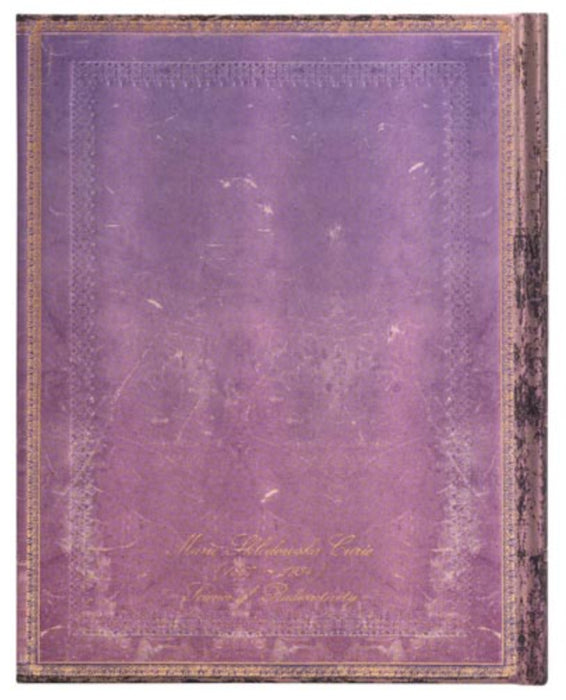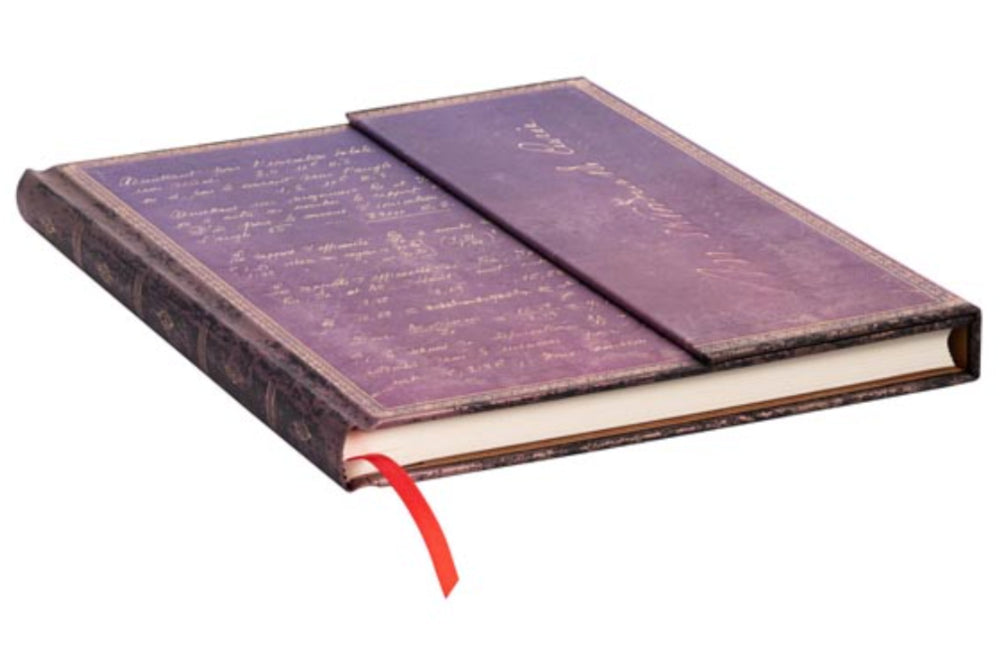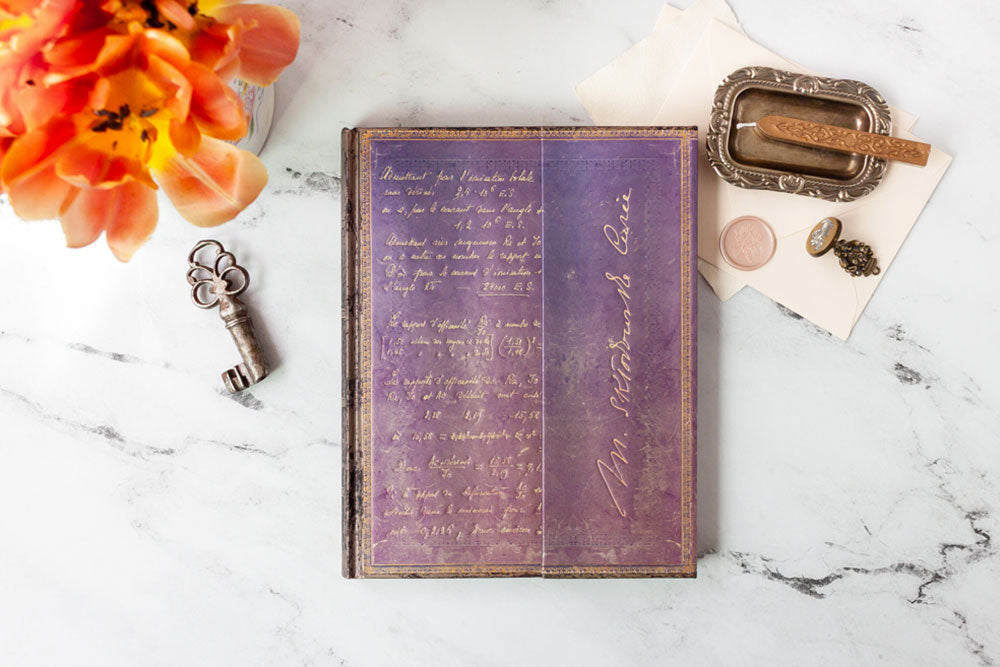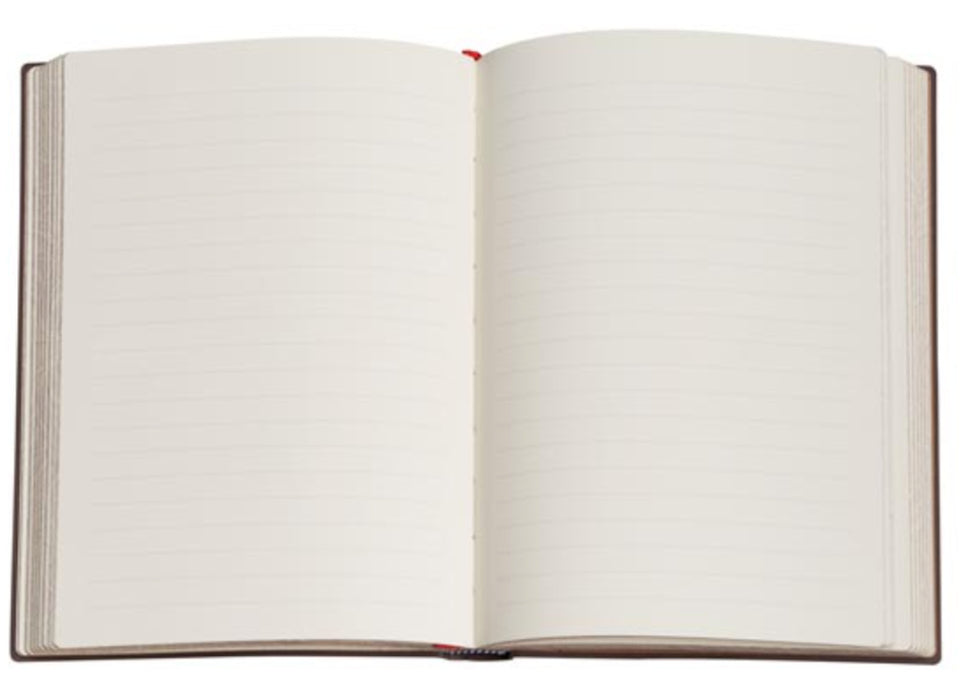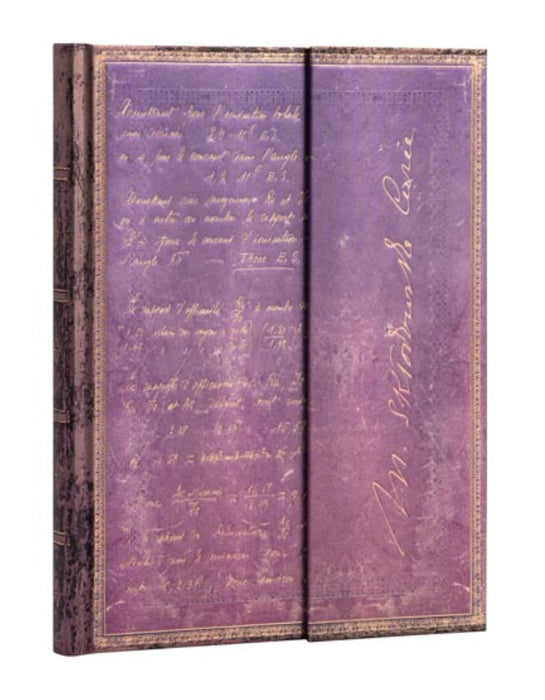
Paperblanks Madam Curie Ultra Journal - Lined
MARIE CURIE, SCIENCE OF RADIOACTIVITY
Marie Sk?odowska Curie (18671934) was a Polish and naturalized French scientist known for her research on radioactivity. Seemingly contradicting the principle of energy conservation, her discoveries forced a reconsideration of the foundation of physics. For this design we have reproduced a page from one of her notebooks.
Marie Sk?odowska Curie (18671934) was a Polish and naturalized French physicist and chemist, best known for her pioneering research on radioactivity. Along with her husband, Pierre, Marie is part of the famed Curie family who earned a combined five Nobel Prizes. Marie was the first woman to be so honoured and remains the only woman to be awarded twice once in 1903 for Physics and again in 1911 for Chemistry.
Born in Warsaw, she began her scientific training at the underground Flying University before following her older sister Bronis?awa to Paris in 1891, where she earned advanced degrees and began her groundbreaking research. It was here that Curies work took off, including developing the theory of and coining the term radioactivity, isolating radioactive isotopes and discovering two elements, radium and polonium, the latter of which she named for her home country.
It was Maries custom to write down all her observations and personal notes in the lab she and her husband kept. Thanks to these notebooks of discovery we have direct insight into the powerful minds conducting such important work into radium purification and measurement. It is a page from one such notebook, in which she wrote on the science of radioactivity, that we have reproduced for this journal cover. The document contains Curies handwritten calculations precisely measuring the radium and thorium (also called ionium) content of different minerals. It dates from the 1920s, after her husbands tragic death in an automobile accident, when her lab was specializing in not only studying, but also producing, radioactive sources.
Thanks to Marie Curies pioneering work, the world could not ignore the radioactivity of radium. Seemingly contradicting the principle of energy conservation, this discovery forced a reconsideration of the foundation of physics, allowing scientists and medical professionals to harness radioactivity for the greater good. Not only was it instrumental in bringing X-rays into the field in World War I, it offered a means by which cancer could successfully be attacked.
Curies legacy is not limited to scientific achievements but covers societal groundbreaking as well. As a woman in the scientific community, she had to overcome additional hurdles and prejudices to earn her respect and position, and to this day she remains the only woman to be awarded two Nobel Prizes. Despite these achievements, she was known to be a modest and generous woman, giving away most of her prize money. She even refused to patent her radium-isolating process in order that the scientific community could continue to develop her principles unhindered.
Marie became director of the Curie Laboratory of the Radium Institute in 1914 and remained in her position until her death at age 66. The work was not without its dangers, of course. Both Pierre and Marie Curie experienced radium burns and were exposed to extensive doses of radiation. If Pierre had not been killed in an accident earlier in life, he likely would have died of exposure-related illness along with Marie.
The Curie Institutes she founded in Paris and Warsaw remain major centres of medical research. Today the Curies notebooks are kept in special lead boxes and are too radioactive to touch without protective lead clothing. We are grateful to the Musée Curie for partnering with us to bring this unique handwritten sample of Marie Curies thought process to the Paperblanks collection.
ABOUT PAPERBLANKS
Paperblanks journals are the ultimate keepsake, a time capsule documenting a period in life, to be read and re-read through current and future generations. Known for their exceptional craftsmanship, high quality, and long-lasting durability, our journals will preserve your contents for years to come.
In Paperblanks journals the laid paper, detailed embossing and texture on each Paperblanks® cover offers a tactile experience a real-life, touchable interlude in an often-untouchable world of television and other digital information.
Paperblanks journals come in a tremendous variety of beautiful cover designs from almost every era, ensuring that there is truly a journal to fit every taste. Choose your own style and create a personalized brainstorming device, a portable stress-reliever, and a unique reflection of existence.
Specifications of the Paperblanks Madam Curie Ultra Lined Journal
| Features: | Exacting design and production. |
| For : | Everyone |
| Origin: | Designed in Europe |
| Size: | approx 180mm x 230m. 144 pages. |
| Extras: | Memento Pouch and Ribbon Marker |
| Acid free sustainable production paper. | |
| Smythe sewn binding |

